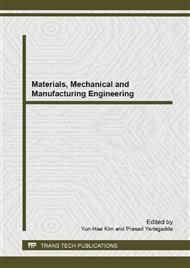p.70
p.74
p.78
p.83
p.87
p.91
p.95
p.100
p.104
Comparison of Prediction Models for Concrete Carbonation
Abstract:
Three prediction models for concrete carbonation were investigated based on 79 groups accelerated carbonation data collected from the references. Model comparison and experimental verification demonstrate that the empirical models are simple and convenient for engineers, but it is often limited to the set of conditions under which they are developed. However, the theoretical model derivated from the carbonation mechanism and the mass conservation of carbonatable constituents is of good accuracy and applicability to real life scenarios.
Info:
Periodical:
Pages:
87-90
Citation:
Online since:
November 2013
Authors:
Keywords:
Price:
Сopyright:
© 2014 Trans Tech Publications Ltd. All Rights Reserved
Share:
Citation:


